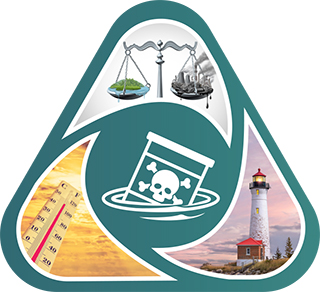
Much of the work carried out by DTT is in support of the National Toxicology Program (NTP), an interagency partnership of the Food and Drug Administration, National Institute for Occupational Safety and Health, and NIEHS.
Table of Contents

Public Health Significance
Wildfires, chemical spills, and unforeseen exposures to novel toxicants are examples of emergency situations and human health concerns that arise unexpectedly, yet regularly. In such events, decision makers depend on timely access to high-quality, actionable information to protect public health. With an increasing number of accidental exposures, discoveries of industrial contamination, and natural disasters, the general population is increasingly exposed to substances for which toxicological data are limited.
Effective and rapid mobilization of scientific resources in response to such situations can be challenging due to their unpredictable nature. Research that intends to be responsive to these concerns must have capabilities, capacity, and communication with pertinent organizations that enable rapid generation of translationally relevant data for public health decision-making.
High-quality, reliable data are necessary to assess which substances have hazard potential so that measures can be taken to limit exposure and risks to the public. Engagement with affected communities and translation of data, particularly when those communities would be most exposed or most susceptible if exposed, are necessary so that actions such as intervention, remediation, and litigation will be well informed.
Research Objectives
The Emerging Contaminants and Issues of Concern (ECIC) research objectives include the following:
- Address emerging issues to which the NIEHS Division of Translational Toxicology (DTT) may apply capabilities and expertise to effectively respond to public health concerns in a timely way. Projects may include:
- Emergencies that require a rapid response when the public has been exposed to a toxicological hazard for which there are insufficient data to adequately characterize potential harm.
- Emerging contaminants or issues of concern for which there are insufficient toxicological information available for understanding key aspects of risk to human health for contemporary environmental issues requiring a prioritized response.
- Use "horizon-scanning" or scoping activities to identify ECIC and develop projects to proactively address the needs of our stakeholders.
- Formulate and apply strategic approaches, leveraging the breadth of DTT capabilities, which allow for fit-for-purpose research responses to emerging contaminants, diseases, disasters, or other concerns. Development of response strategies is an iterative process and will include coordination and regular communication with internal and external organizational stakeholders and allow for the identification of capabilities and research gaps.
Background
DTT's responses to emerging contaminants, such as the West Virginia chemical spill at Elk River, have demonstrated that success depends on a prioritized, coordinated response with adherence to timelines. Ultimately, this research will strengthen the science base around ECICs, promote the use of DTT resources to effectively respond to environmental health emergencies, and facilitate coordination with other federal programs.
Engaging with other organizations focused on emerging contaminants will help to identify ECIC and knowledge gaps that might be amenable to potential collaborations. Continued discussions on national and state levels will enhance the use of limited resources by avoiding duplication of effort, increasing productivity, and identifying and engaging communities and groups advocating for scientific solutions to critical health concerns.
Select Studies
| Study | Description | Findings/Supporting Files |
|---|---|---|
| Rapid Scoping Review of East Palestine, Ohio Chemicals of Interest | On February 3, 2023, a Norfolk Southern Railway general merchandise freight train derailed, releasing vinyl chloride and other hazardous chemicals into the environment in East Palestine, Ohio. Three days later, first responders conducted a controlled burn to prevent an explosion, releasing volatile organic compounds (e.g., acrolein, benzene) into the air and potentially leaving other residual chemicals in the soil. To inform potential future research on health effects and facilitate communication with affected communities, we conducted a phased scoping and rapid SR of health hazard information for the East Palestine chemicals of interest. | NIEHS Phased Scoping Review of the East Palestine, Ohio Train Derailment |
| Chronic Kidney Disease of Unknown Etiology (CKDu) | Retrospective systematic review of National Toxicology Program database to explore similarities in renal histomorphology and pathogenesis between rodent and human pathologies. | |
| Glyphosate |
| Glyphosate & Glyphosate Formulations |
| MC-LR | Evaluate the chronic low dose effects of microcystin exposure associated with drinking water. | Testing Status of Microcystin LR M000056 |
| Sulfolane | Evaluate the toxicity of sulfolane, focused on effects on development, reproduction, and immune systems function. | Sulfolane Reasearch Topic |
| Tungstate | Evaluate the chronic toxicity and carcinogenicity due to potential human exposure via contaminated drinking water and assess human health implications of elevated exposures. | Testing Status of Sodium Tungstate Dihydrate M030038 |
| Synthetic Turf/Recycled Tire Crumb Rubber | Conduct research to enhance understanding of the chemicals released from synthetic turf, with an emphasis on the crumb rubber and the potential for health effects. | Synthetic Turf/Recycled Tire Crumb Rubber Research Topic |


